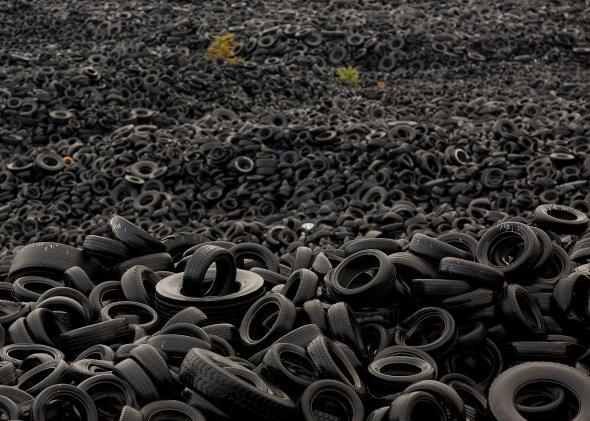This article originally appeared in Inc.
A key to sustainable business in every industry is creating a circular economy: What used to be considered waste is fed back into the production process as raw material. Factories are increasingly identifying “zero waste to landfill” as a goal, seeking new ways to recycle and repurpose their waste, and industry research looks at how to make products more recyclable. This focus is known as “product stewardship.”
Some products, such as paper or aluminum products, can be recycled into new paper and aluminum products, but this is not always the case. For example, tire production includes a vulcanization process, similar to baking, and just as it isn’t possible to take butter and flour out of an already baked cake, it is not possible to extract natural rubber or other ingredients out of a vulcanized tire. This means an old tire cannot really be converted to a raw material for a new tire.
Still, the tire industry has been called upon in many parts of the world to take responsibility for disposal and recycling of discarded tires including removal of tire stockpiles. In the U.S., market-based solutions have emerged.
Today, about 95 percent of tires too worn to use are repurposed for other applications. Of these, 56 percent become tire-derived fuel, a substitute for coal and other fuels commonly used in cement kilns, pulp and paper mills, and for electricity generation. Twenty-five percent of scrap tires are repurposed for ground rubber applications, including rubberized asphalt, artificial turf fields, and playground surfaces. Rubberized asphalt lasts longer than ordinary asphalt and has properties such as noise control, erosion prevention, and better drainage. Another 5 percent is used in civil engineering applications.
In 1990 there were about 1 billion stockpiled tires in the U.S.; by 2013 that number had fallen by 92 percent.
Many of these new markets got off the ground with the help of state incentives. The state would give grants for market development and stockpile abatement, funded by a small fee paid by the consumer dropping off her old tires at the dealer when replacing them with new tires. Another part of the consumer’s small fee (usually between $1 and $3) would go to a scrap tire collector, who would cart the old tires to processors en route to the end-use markets. Much of the new market development was stimulated by representatives of tire manufacturers, who have held conferences, set up meetings with states, and put processors in touch with companies that could use the ground-up tires. In the case of rubberized asphalt, the new product is ready for use but often local governments won’t spend the extra money up front for pavement that will last longer, even if they would save money long term by having to repave less often. This is an open opportunity for financing solutions.
The hope is that with a boost from technology innovation and financing solutions, scrap tires could become so valuable as a raw material for other uses that people will be willing to pay handsomely for them.
All this is an example of the direction needed in order to create a circular economy approach to waste. Manufacturers of any product need to focus on ways to produce the product so that it is more recyclable, and new markets for recycled products can be developed strategically. Technology can fill in the gaps.
A suggestion for entrepreneurs looking for markets to fill: look at the waste cycle of any product. Find the weak links in the circle, and identify cost-effective solutions. Customers will be lining up.
See also: 6 Sustainability Buzzwords to Use at Cocktail Parties
